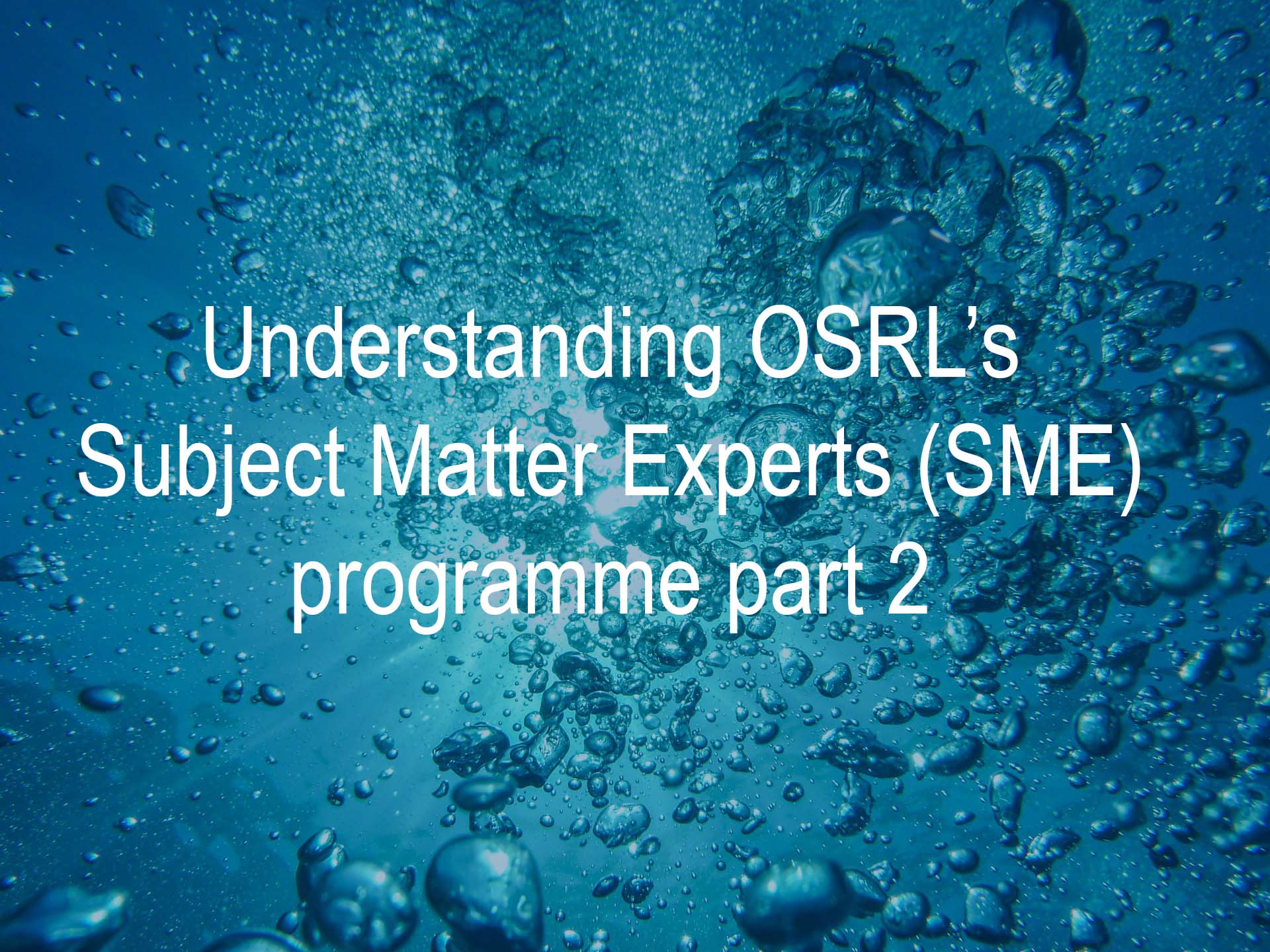
In this series of articles, we look to highlight the activity of OSRL’s Subject Matter Experts (SME) programme and the working groups established to advance each discipline’s objectives.
In this feature, we speak with Liam Harrington-Missin, the co-chair of the ‘Surveillance, Modelling and Visualisation’ working group. Liam explains the Modelling and Visualisation subgroups goals and activity, and how they are helping OSRL maintain its position as the world’s foremost oil spill expert.
What can you tell us about the Modelling and Visualisation (MV) subgroup
The MV sub-group is one of eight core groups within the SME programme and is made up of OSRL personnel from across the business’ three operating regions – each with either existing experience or a personal interest in the topic.
The purpose of the group is to broaden the knowledge of our internal teams; develop OSRL’s capabilities within the field; and test, validate and communicate the value of new tools and emerging technology that could positively impact our activity or workflow.
The nature of modelling and visualisation as a discipline means we are instinctively excited by the potential benefits new technology and big data can bring. We’re interested in understanding how we can leverage existing tools to better meet the needs of our members, how we can create new, bespoke tools, or how developments in other industries could be adapted to our requirements.
What are the group’s current objectives?
Right now, our objectives include exploring how technology can be used to improve forecast modelling and the ongoing management of a spill, as well as the development of the digital tools required to present and consume the information we gather. Previous projects involved working with the Surveillance sub-group, we evaluated the ways to visualise data provided by new surveillance assets such as aerial drones and underwater robots. We’re currently looking at how we can leverage the latest developments in both optical and radar satellite technology. We are also investigating how we can augment this intelligence with other datasets to create a comprehensive common operational picture.
One of the other initiatives is a bespoke OSRL development, called the SCAT app. SCAT stands for ‘Shoreline Clean-up Assessment Technique’ and it is already proving popular with our responders and several of our members who have supported its development. When a spill impacts the shoreline – or when it has the potential to do so – collecting critical data can be incredibly time consuming. Whereas historically a lot of information would have been written by hand, often in less than ideal conditions, the SCAT app enables the team on the ground to quickly input everything we need into a tablet computer, and for that information to be automatically shared with the wider team, command centre and relevant analysts around the world.
Another web-based solution we are working on relates directly to spill modelling and environmental sensitivities. Previously, during an incident, we would create a PDF summary document, which was typically just two pages and contained a map and a few tables. We are now reviewing a prototype website we’ve developed, where responders and members can interact and interrogate all the relevant data and answer their questions independently. For example, if they would like to know where a spill will be in three, four or five hours, they can see that information at the touch of a button. Again, it’s about making our systems and processes more efficient, and our input more valuable, through the use of technology.
Finally, we are looking to see if the growing advancements in augmented, mixed and virtual reality have a place in oil spill preparedness and response. This is very much an R&D project at the moment, but our initial findings suggest potential in the areas of training, improved situational awareness, safety and efficiency.
Other important areas of focus are internal knowledge transfer and communication with our external audience. Effectively, if the outcome from our research is positive, and we find a new tool or application useful, we want to share it with our teams and Members, and understand if they would also find it beneficial to their workflow. To do this, we present at conferences and exhibitions all around the world, perform exercises with members and run workshop style events. Personally, I am sharing the success of the SCAT app to an industry audience in Canada next month and London the month after.
We also invest time in attending conferences and exhibitions for other parallel industries, looking at the products they are bringing to market and trying to understand if they have potential within spill response. We learn a lot from the aeronautical and automotive industries, which are in many ways significantly ahead of us in terms of R&D.
What’s next for the MV group?
As described, there are several concurrent work streams we are committed to, and several are already delivering impressive results – which is an exciting prospect. We expect tools like the SCAT app to be operationally ready soon and a few of the other R&D initiatives are not far behind so we will be dedicating more time to communicating our developments and releasing them to our responders and members’ teams in the coming months.
Away from the technology side of things, we will continue to give our people the opportunity to learn about an important and growing area of oil spill response, to set their own goals and be given the freedom to explore new ideas and new ways of doing things – all to benefit OSRL as an organisation, our members and the wider industry.
Have a question? Email us here
In next weeks feature, we will be speaking with James Pringle, the co-chair of the Surveillance sub-group, who explains the team’s goals and activity, and how they are helping OSRL maintain its position as the world’s foremost oil spill expert.




